

Josh Nevett
2025 Hyundai i30 N auto review
1 Month Ago
This is the first time Hyundai has stuck the i30 badge to a sedan. And it sure looks interesting. The base Active grade is a mixed bag.
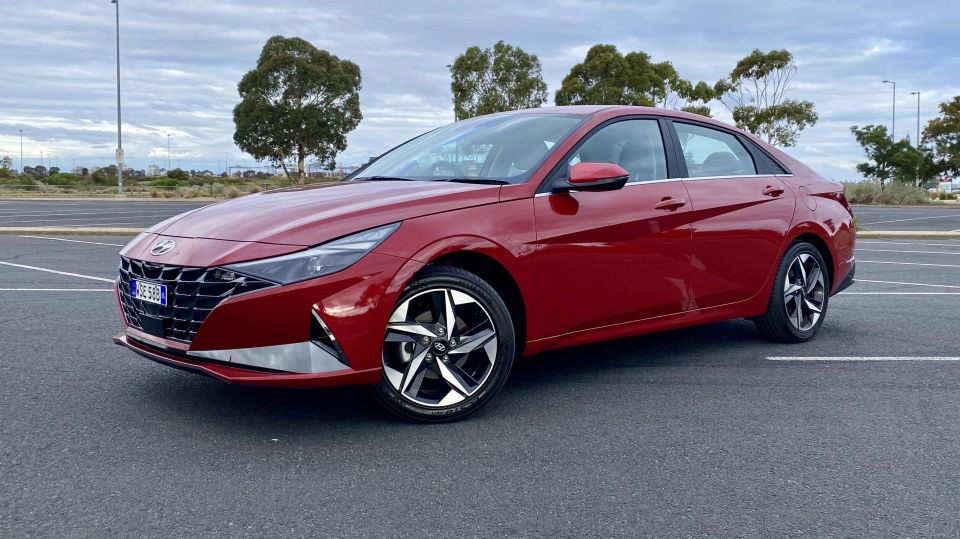
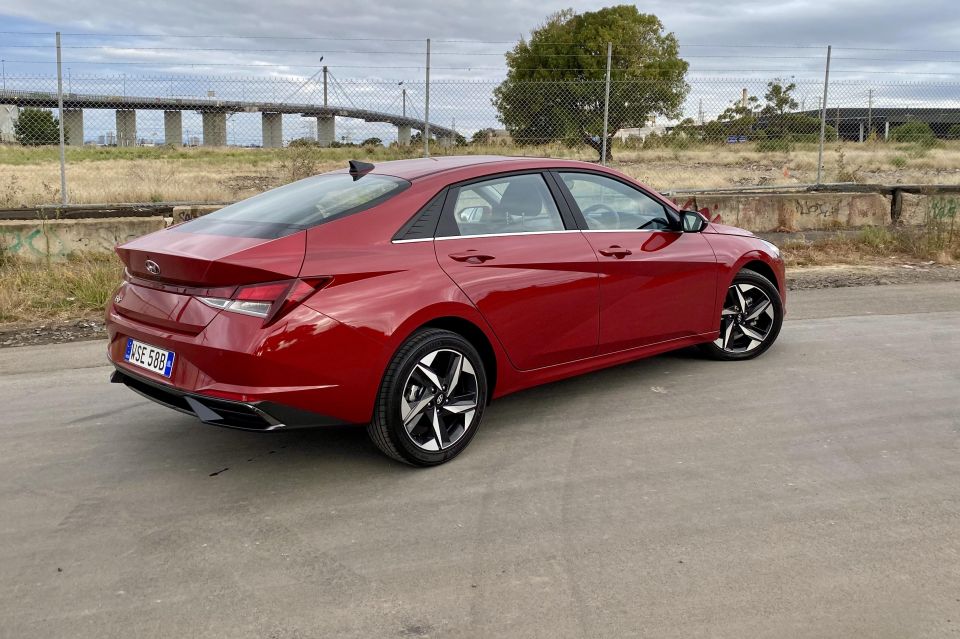

Senior Contributor
New from
$20,440
excl. on-roads

Senior Contributor
New from
$20,440
excl. on-roads


Senior Contributor
New from
$20,440
excl. on-roads

Senior Contributor
New from
$20,440
excl. on-roads
Quickly see how this car stacks up against its competition. Select any benchmark to see more details.
Where expert car reviews meet expert car buying – CarExpert gives you trusted advice, personalised service and real savings on your next new car.
The rise of SUVs has sent small sedan sales southward at a rate of knots.
Competitors such as Honda are vacating the traditional three-box small-car market altogether, much as the likes of Ford (Focus sedan) and Volkswagen (Jetta) did before it. Hyundai has no such plans.
The Hyundai i30 Sedan actually replaces the Elantra nameplate in Australia – though it’s still known as the Elantra in North America. The well-known i30 nameplate has adorned generations of small hatches and wagons, and even briefly a five-door coupe of sorts. But never a sedan.
With this familiar branding comes the potential for market share gains, built on the back of greater consumer awareness.

While the rival Toyota Corolla and Mazda 3 sedans are similar to their hatchback siblings, that’s not the case here. Each i30 body style looks radically different inside and out, reflecting where each is in its respective life cycle.
Looking long and hard at this i30, I get the sense the decline in sedan sales has liberated designers to take a few risks. They don’t need to appeal to everyone with a car like this now, so why not take a bit of a punt?
As such, the i30 Sedan is one of the most interesting sub-$30,000 cars you can get. Whether you love or loathe its origami creases, brash face, and swooping proportions is a matter of taste. But it inarguably stands apart.

The base i30 Sedan Active we’re testing wears a list price of $24,790 before on-road costs as a manual, or $26,790 for the automatic tested here.
This equates to a drive-away price on our vehicle of $29,990, before you get down to the haggle.
To give some context, base-level rival sedans with automatic transmissions are the Mazda 3 G20 Pure ($30,550 drive-away), Toyota Corolla Ascent Sport ($29,314), Kia Cerato S with Safety Pack ($26,490), and Honda Civic VTi ($27,230).
These prices are all attached to a 3000 (Melbourne) postcode.
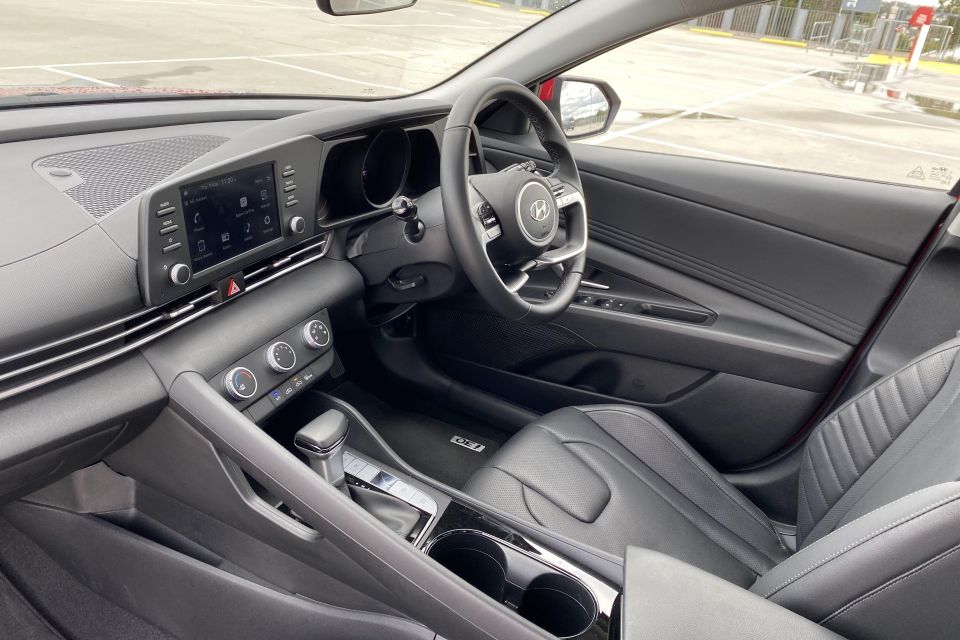
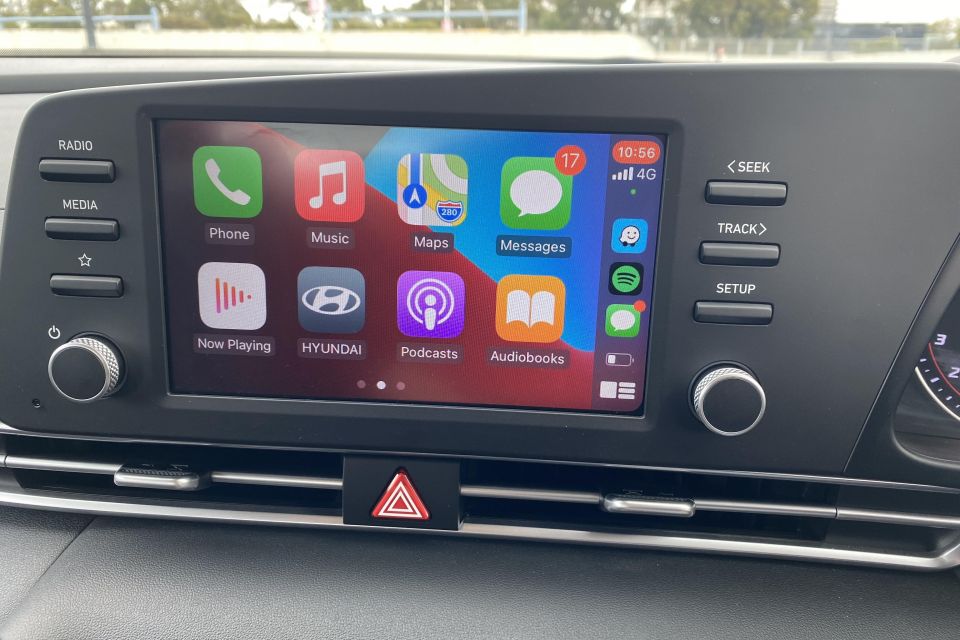
The i30 Active is the entry grade, so you only get the basics.
These include 17-inch alloy wheels with a full-sized spare, halogen projector-type headlights, LED daytime running lights, ‘leather-appointed’ seats and steering wheel, manual air-conditioning, a digital speedo, an 8.0-inch touchscreen with Bluetooth/USB and Apple CarPlay/Android Auto, and a wireless phone charger.
If you want more mod cons, then the next rung on the ladder is the auto-only i30 Sedan Elite, priced at around $34,700 drive-away depending on where you live (or $30,790 plus on-roads, $4000 more than the auto Active’s list price).
This grade adds extras including a proximity key system, rain-sensing wipers, a larger 10.25-inch touchscreen with satellite navigation. a Bose sound system, hands-free boot opening, a fully digital instrument display, and climate control. Seems like the one to go for…
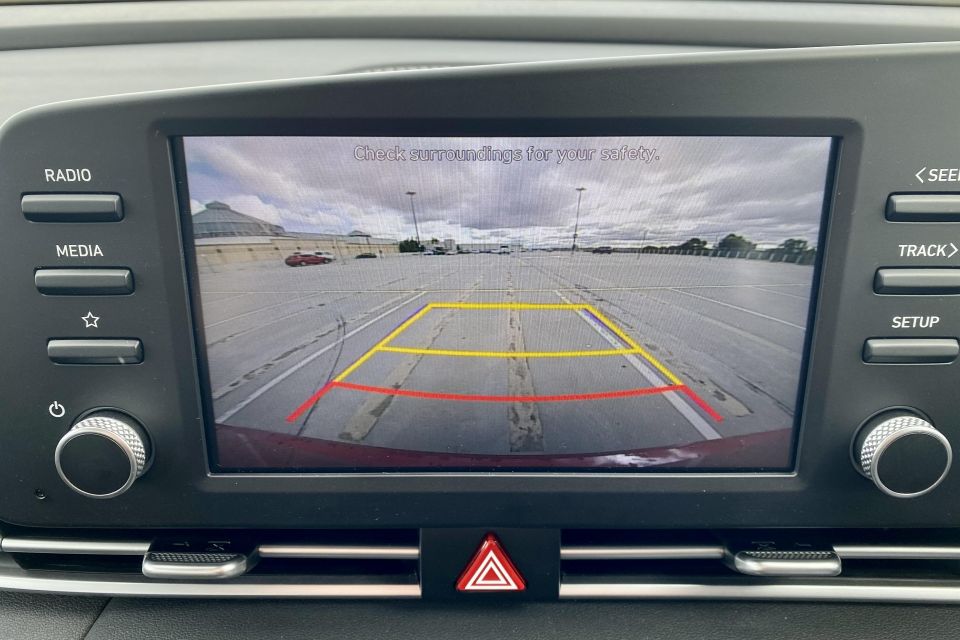
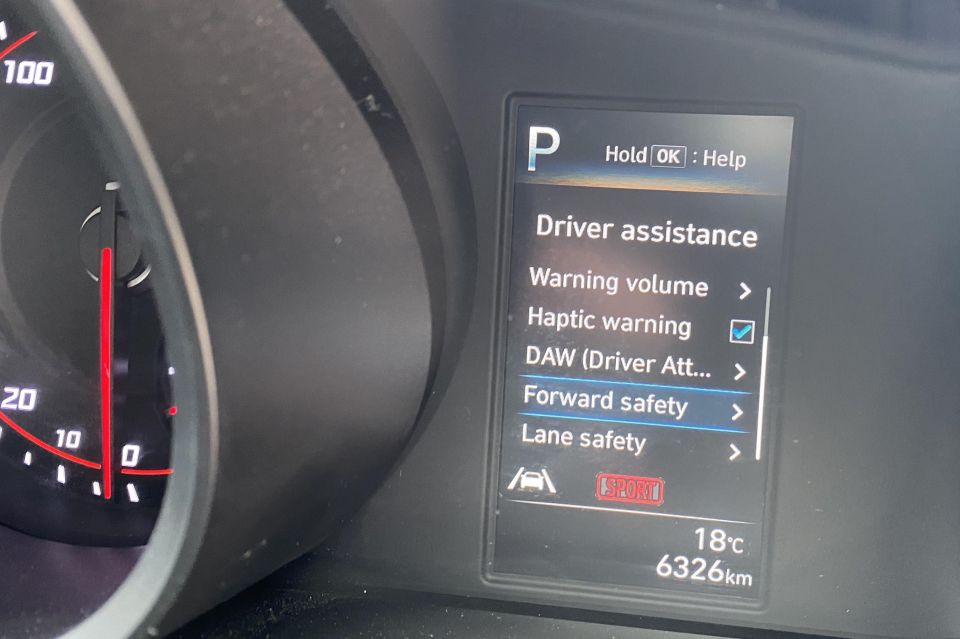
Passive safety equipment includes two front airbags and two front-side airbags, plus full-cabin-length curtain airbags. There is no front-centre airbag.
Active safety assist features fitted as standard include camera- and radar-guided autonomous emergency braking (AEB) designed to sense cars, pedestrians and cyclists at all speeds, and to work while turning at junctions.
There’s also driver-attention monitoring, an active lane-keeping aid with steering inputs, leading-vehicle-start alert, and adaptive cruise control.
The Elite grade bolsters this further with blind-spot monitoring and rear cross-traffic alert.
Disappointingly, there’s no set ANCAP score for the i30 sedan, though the hatch has a five-star rating with a 2017 date stamp. The fact the sedan doesn’t simply inherit this score suggests it’s quite a different vehicle – it does ride on a new platform, after all.
Given the absence of a centre airbag – a recommended but not mandatory feature – I’d suggest this car might be a four-star vehicle by 2021 criteria. But we don’t know for sure, and won’t unless ANCAP does a test.
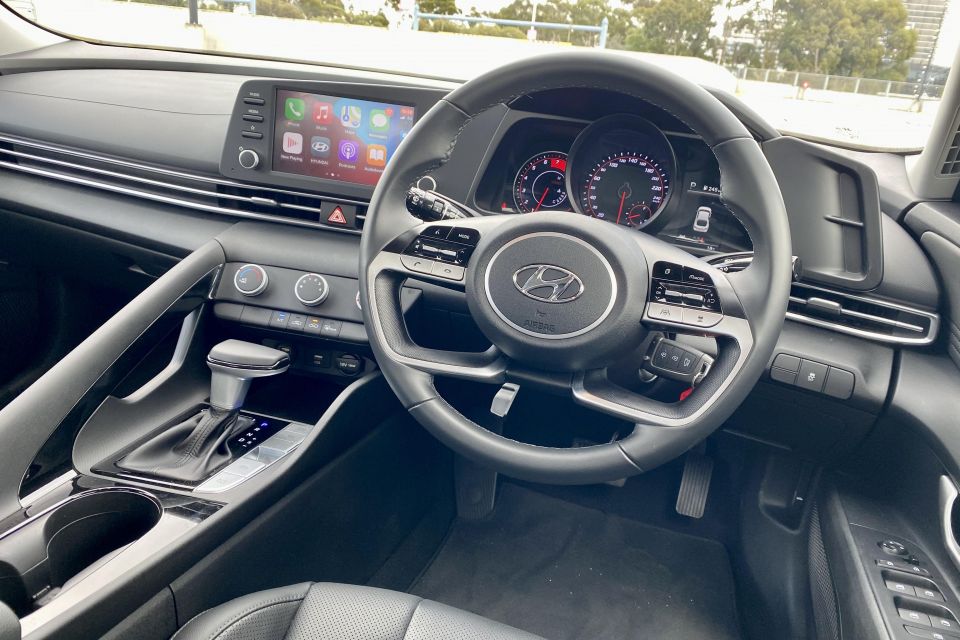
The centre fascia is tilted towards the driver which, combined with the low-slung driving position, creates a sporty sort of feel. That passenger-side grab handle strikes me as ambitious, but it adds a certain style.
The seats are trimmed in synthetic leather and offer acceptable bolstering. The steering wheel has an unusual spoke pattern but feels nice in the hand, and the basic analogue gauges with red colouring are offset by a helpful digital speedo.
The centre touchscreen houses a reversing camera and phone mirroring in place of proprietary navigation. The audio quality is okay but the lack of DAB+ might grate.
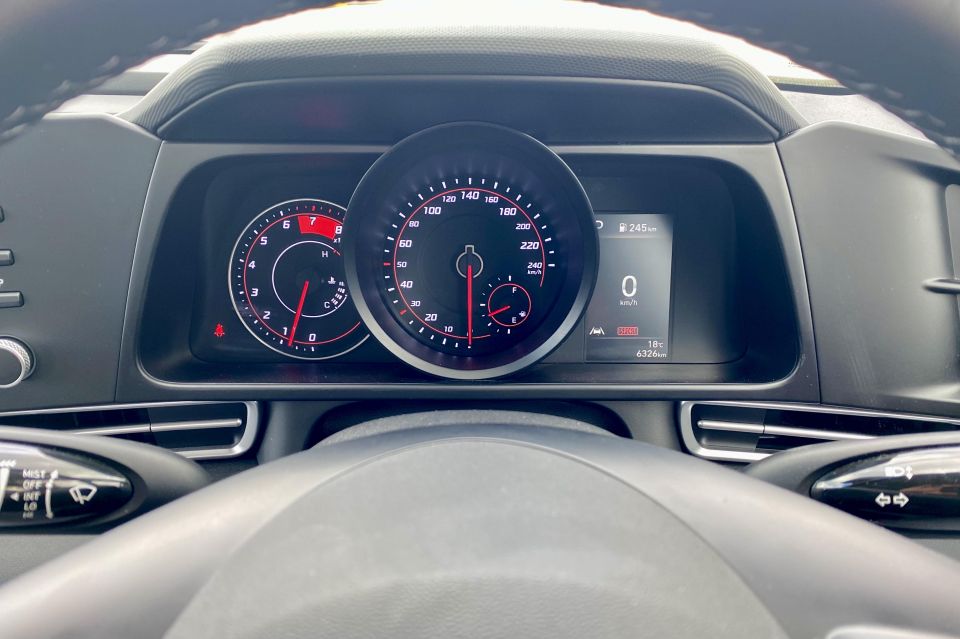
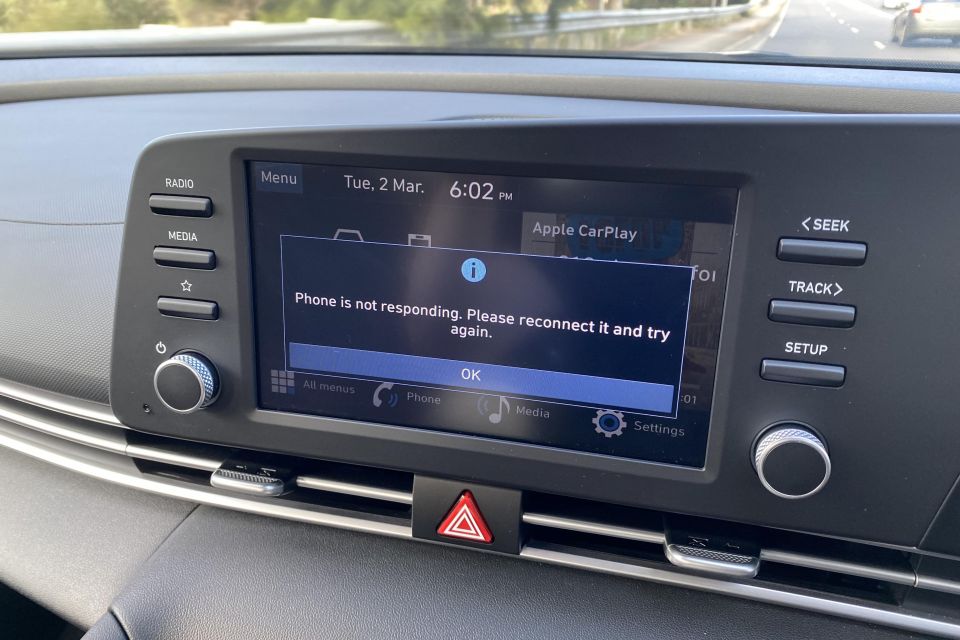
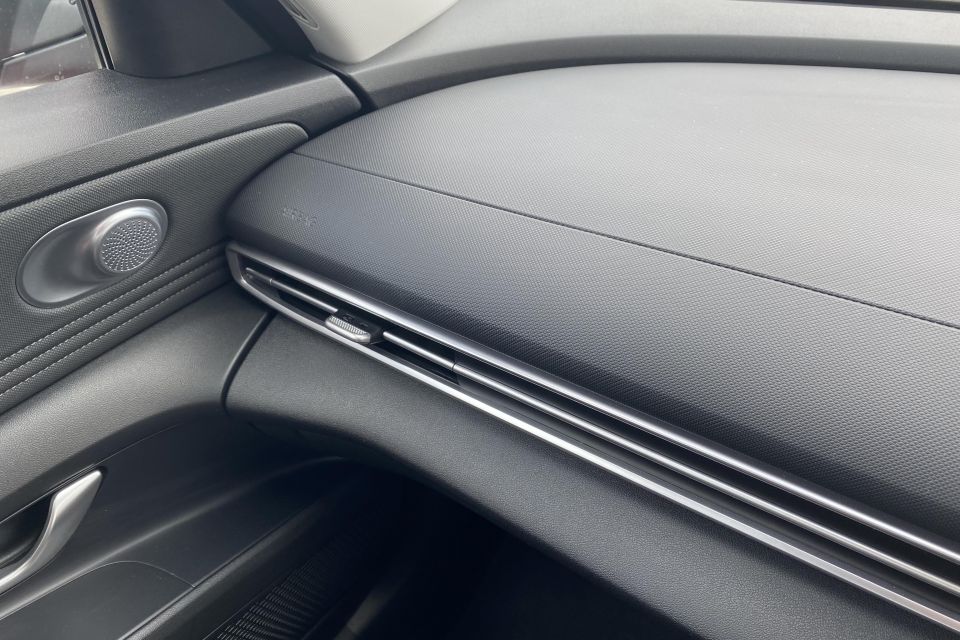
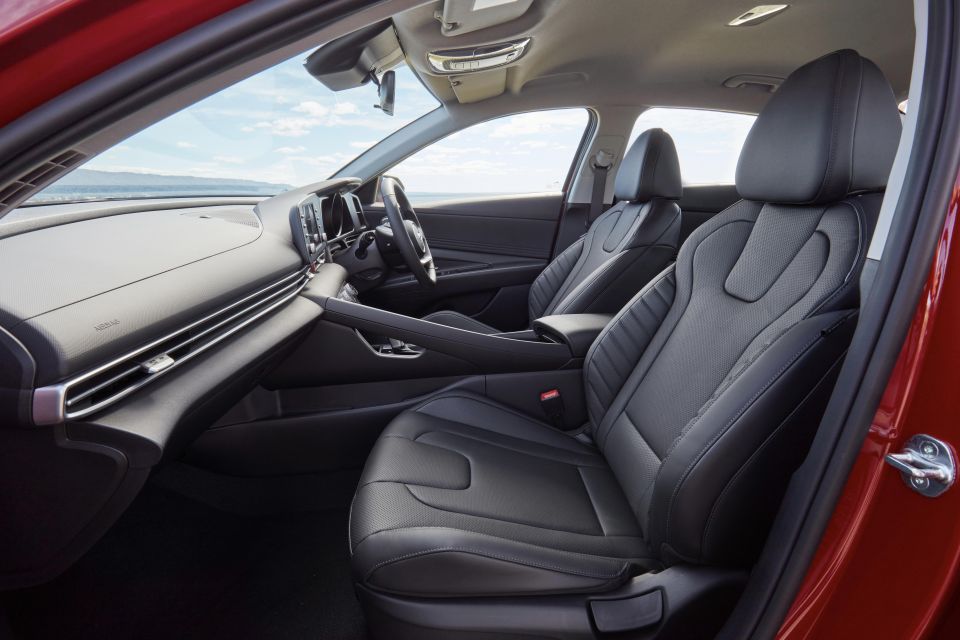
The Apple CarPlay connection actually runs wirelessly which is neat, but Hyundai/Kia really need to fix the big that causes the map drop out every once in a while. Clearly there’s been an issue with the way an iOS update works with the head unit.
The company has gone to some effort with the design, examples of this being the way the dash top blends into the doors, the silver speaker covers, and the metal-look contrast colour points running horizontally from door to door.
It’s certainly built to a price though. Shaking the transmission tunnel causes a few squeaks, and some of the trims and switches aren’t that pleasingly tactile. Still, this is a base car and Hyundai has certainly put some effort into the look.

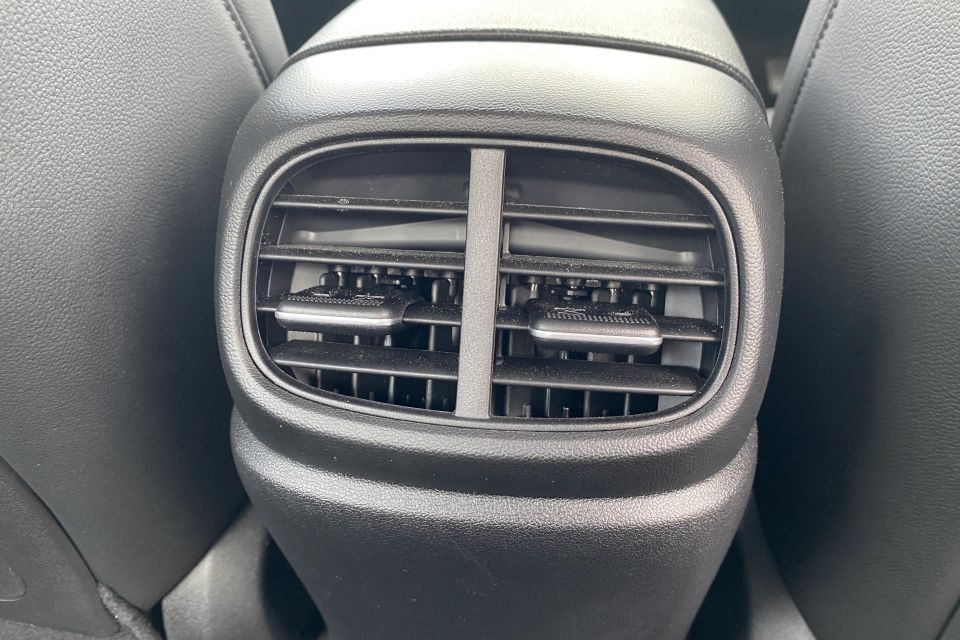
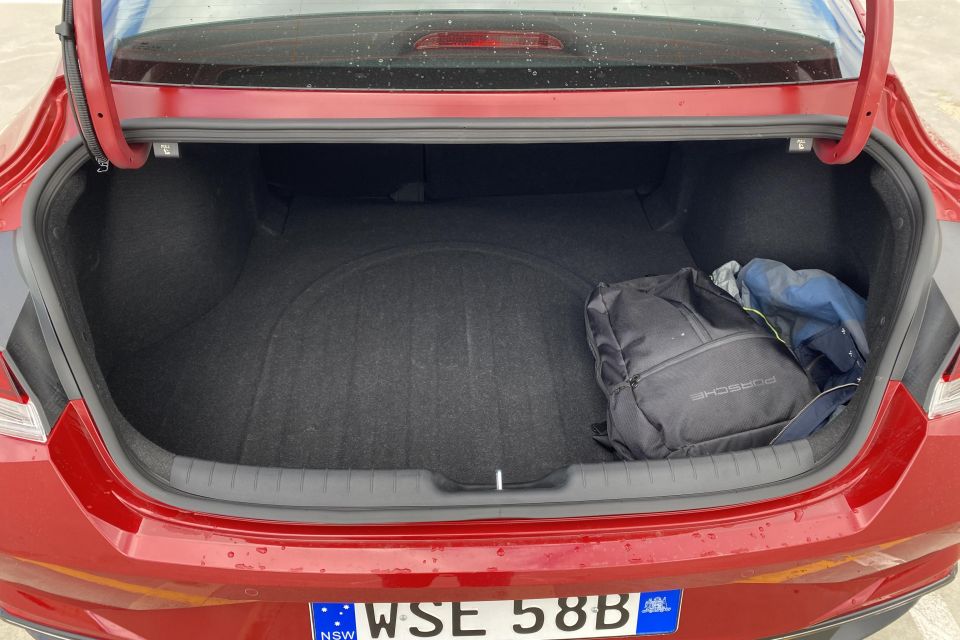
Cabin storage is okay, though the door pockets are very slim and wouldn’t fit a 1.5-litre bottle.
The back seats offered legroom for my 194cm frame behind my own preferred driving position, and there are rear vents. Headroom falls slight victim to the swooping roof, but it’s spacious enough to be considered a four-adult car. The legroom is longer than the hatch’s by the way – see table below.
Boot space is 474 litres, which compares to 395L for the i30 Hatch. By way of comparison the Corolla sedan’s boot is 470L, the Mazda 3 sedan’s is 444L, and the Kia Cerato sedan’s stores 502L.
As mentioned earlier there’s a rare-for-the-class full-size spare wheel which earns Hyundai a big tick, and two levers atop the boot opening flip down the back seats to help fit bulkier items.
| i30 Sedan | i30 Hatch | |
|---|---|---|
| Length | 4650mm | 4340mm |
| Width | 1825mm | 1795mm |
| Height | 1430mm | 1455mm |
| Wheelbase | 2720mm | 2650mm |
| Boot | 474L | 395L |
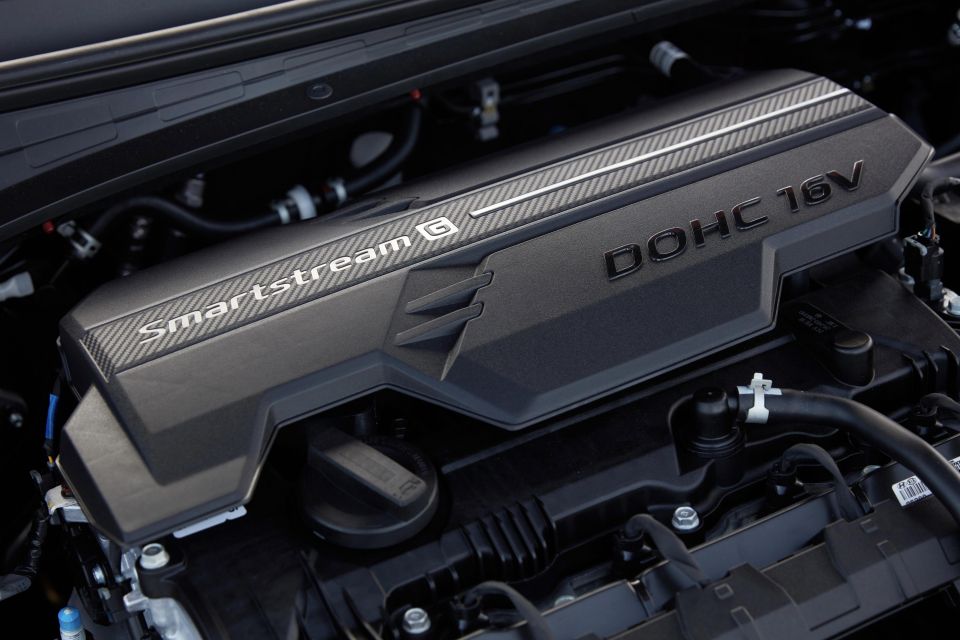
The engine powering the i30 Active and Elite sedans is a 2.0-litre naturally-aspirated petrol unit with multi-point injection. It produces 117kW of power at 6200rpm and 191Nm of torque at 4500rpm.
It’s mated here to a six-speed automatic transmission and is standard front-wheel drive (FWD).
It’s rated to run on basic 91 RON or E10 fuel, and Hyundai claims fuel consumption on the combined cycle of 7.0L/100km.
Over 300km of mixed driving (biased to highways) I actually saw 6.9L/100km.
Oddly, the Hyundai i30 Hatch Active has a different 2.0-litre (with direct injection) making 120kW and 203Nm. If you want more punch, the i30 Sedan N Line range has a turbocharged 1.6-litre with 150kW/265Nm, plus a quick-shifting seven-speed DCT auto.
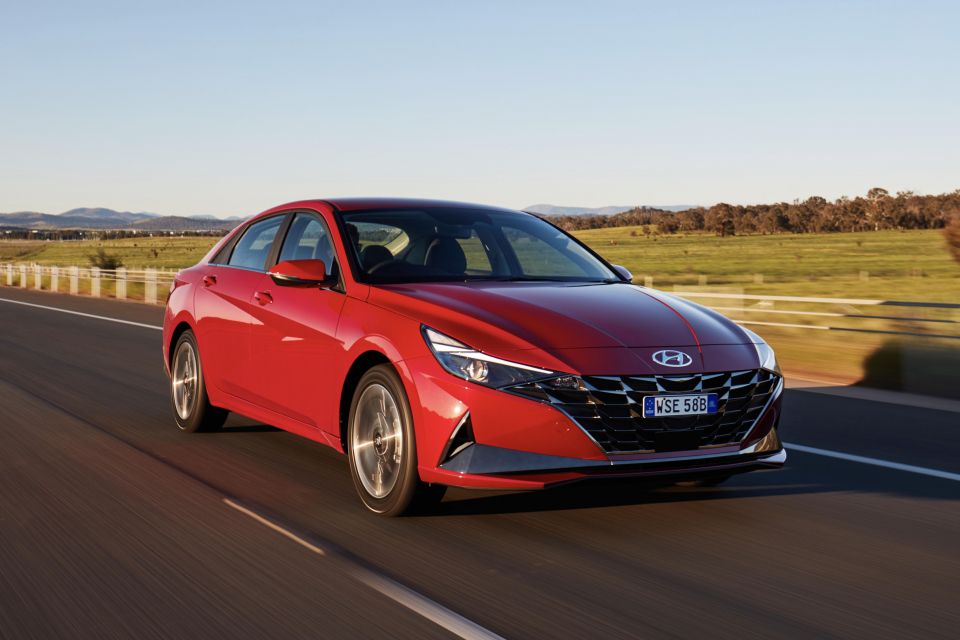
The engine is actually quite perky, offering a nice linear response and quite brisk 0-40km/h acceleration for in-town commuting. Press the Sport mode button and the throttle response seems sharper again.
As you increase your speed the engine needs ever more revs to deliver its maximum outputs, which doesn’t help refinement, and its rolling response is never as effortless as a small turbo with a meaty mid-range.
But for A to B point-and-shoot commuting it’s actually quite engaging, and always responds to commands immediately.
The ride quality is firm, meaning the body feels quite tied-down and isn’t prone to much up-and-down movement, but it’s neither crashy nor brittle over bigger hits. Likewise, directional changes are quite rapid.
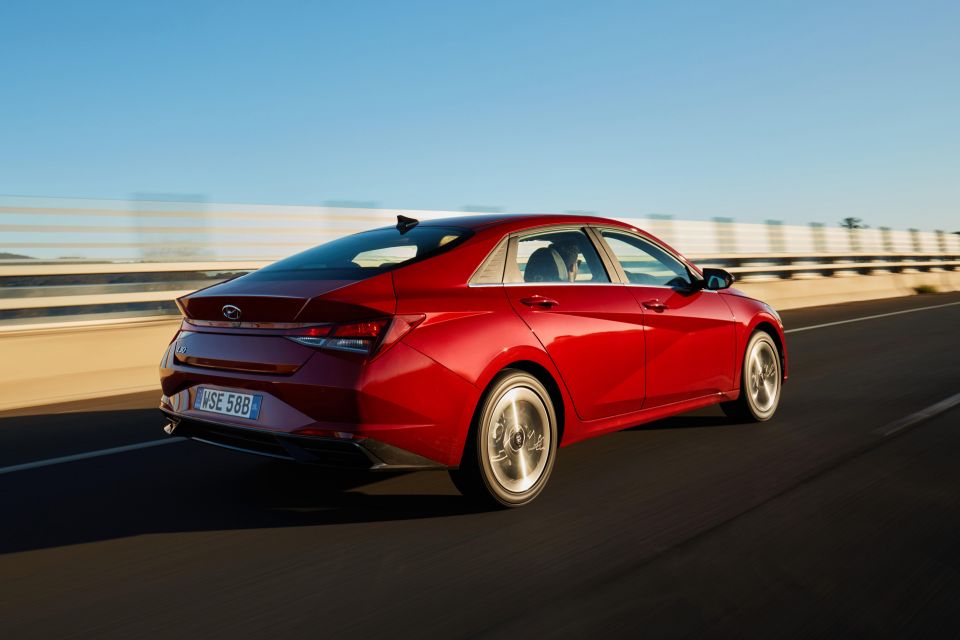
It’s a pretty slow car, but Hyundai has made it quite engaging nevertheless.
The major dynamic issue is noise, vibration and harshness (NVH).
There’s too much droning from the Kumho tyres at speeds above 80km/h, particularly on the coarse-chip roads common to regional Australia. You shouldn’t have to raise your voice to chat with your passenger on a road trip.
The active safety systems are good, particularly the steering assist that deftly kept the car centred for 10 seconds without driver input.
By the way, this system is not designed to replace the driver, only to help them.
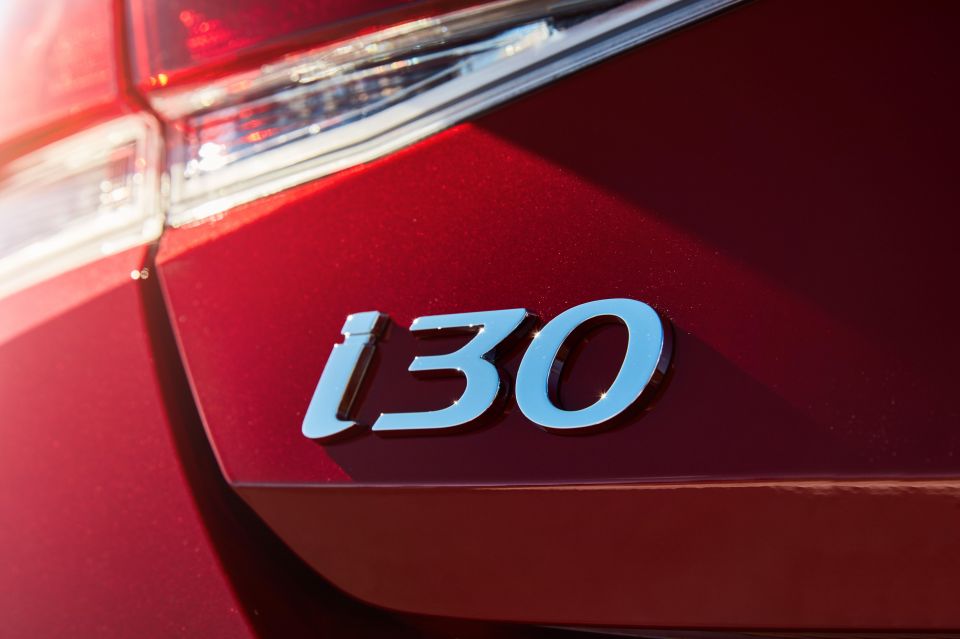
Hyundai Australia’s warranty is five years with no kilometre limit.
Hyundai sells service packages that cover three years/45,000km (intervals are annual or 15,000km, whichever comes first) for $897, four years/60,000km for $1196, or five years/75,000km for $1495.
An average of $300 per service is pretty cheap.
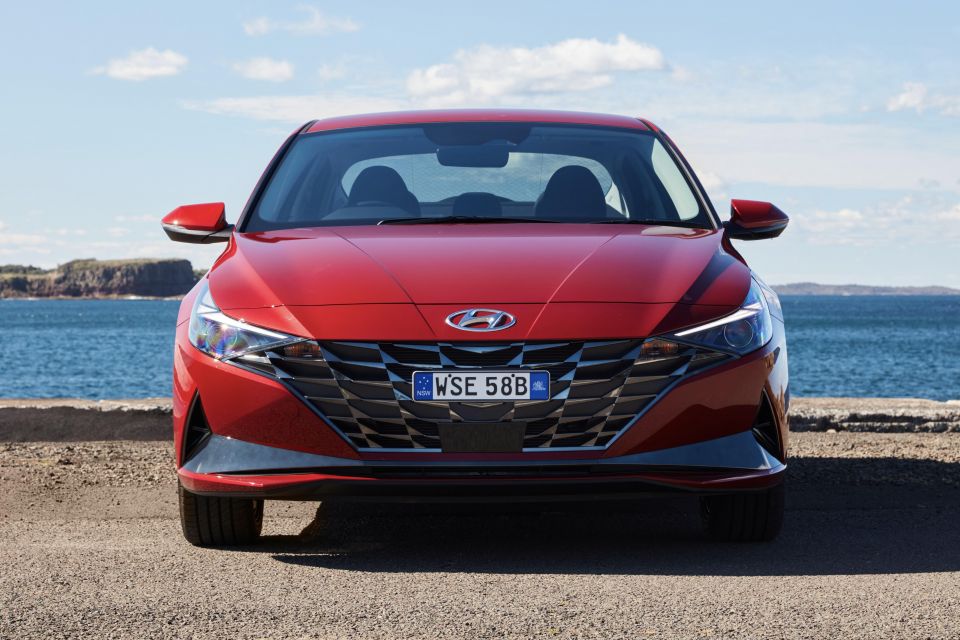
We can’t fault Hyundai’s adventurous design, and the i30 Sedan’s case is further bolstered by sprightly road manners, good safety tech, an affable drivetrain that belies its outputs, and a driver-focused interior look that doubles down on sportiness.
But there are a few flaws, principally the surfeit of tyre roar on rougher roads, some pretty uninspiring interior trims, no ANCAP rating, and the continuous glitches we’ve been experiencing with wireless CarPlay in Hyundais and Kias.
Looking at the spec sheet, I also can’t help but feel the stretch into a better-specified i30 Elite reviewed here is well worth it.

Where expert car reviews meet expert car buying – CarExpert gives you trusted advice, personalised service and real savings on your next new car.
Click the images for the full gallery
Where expert car reviews meet expert car buying – CarExpert gives you trusted advice, personalised service and real savings on your next new car.


Josh Nevett
1 Month Ago


William Stopford
1 Month Ago


James Wong
1 Month Ago


Matt Campbell
29 Days Ago


Max Davies
15 Days Ago
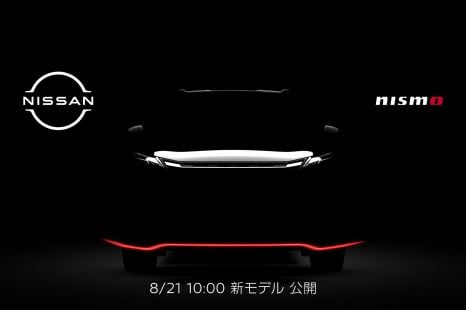

William Stopford
5 Days Ago